Weekly cattle and sheep wrap
Key points
- Cow demand eased due to scattered Queensland rainfall.
- Sheep indicators softened, driven by mixed quality and increased supply.
- Cattle slaughter returned to recent norms, while lamb throughput dropped to lowest volumes since easter.
Cattle market
The national cattle market eased slightly between 1.4–5¢ for most indicators, excluding the Feeder Indicators. The Feeder Heifer Indicator increased most lifting 17¢ to 414¢/kg liveweight (lwt). Cattle yardings lifted by 1,735 head but cows saw a decrease. Both the Restocker Yearling Heifer and Steer Indicators saw increases.
The Feeder Heifer Indicator increase was driven by strong restocker and feeder competition at Dalby and Forbes, and supply increased 156 head. NSW prices remained stable – lifting just 0.9¢. Queensland lifted 17¢, while Victorian prices eased.
Scattered Queensland showers meant cows couldn’t attract similar demand. The Processor Cow Indicator was relatively stable, decreasing 4¢ to 356¢/kg liveweight (lwt). The cow market saw moderated prices when compared to last week's price extremes, leading to prices easing in Victoria (-6¢), Queensland (-12¢) and NSW (-13¢).
Sheep market
The national sheep market eased week-on-week (WoW) with all indicators falling between 33–83¢ from last week’s records. Yardings were stable. Lamb throughput eased less than 1% to 183,425, while mutton yardings increased 3% to 92,190. A significant lift in WA combatted NSW reductions.
The National Heavy Lamb Indicator eased 70¢ on last week’s highs, landing on 1,176¢/kg carcase weight (cwt). Despite a significant reduction in indicator throughput, mixed quality across saleyard offerings impacted average prices. While market reports showed top quality heavies receiving similar prices to last week, overall mixed offerings pulled prices down. The NSW price sat 15¢ above the average.
Saleyards did not sustain last week’s mutton records with prices easing 34¢ to 738¢/kg cwt. Record prices influenced greater yard supply, lifting indicator yardings by 11,909 head. Griffith fetched the highest prices at 874¢/kg cwt, driven by high quality animals meeting strong exporter demand.
Slaughter
Week ending 8 August 2025
Cattle
National cattle slaughter lifted 4% to 156,318, aligning with the past two monthly averages. Supply remains steady across the east coast and small lifts were seen in all states bar WA. Queensland’s 6% growth was the biggest influence on the national increase with the state's throughput surpassing 81,000.
State-by-state breakdown of cattle slaughter:
- NSW up 2% to 36,976
- Queensland up 6% to 81,181
- SA stable at 3,824
- Tasmania stable at 4,722
- Victoria up 3% to 26,393
- WA down 3% to 3,222.
Sheep
Maintenance shutdowns continue to impact national throughput. National lamb slaughter eased 7% WoW to 331,922. This represents the lowest lamb throughput since the easter long weekend. A drop in SA figures indicates a plant maintenance period, impacting national figures. However, general declines across all other states reflect supply-led reduction.
Mutton slaughter grew 7% to 147,355 – its highest throughput week since June. High prices have likely encouraged mutton turnoff across states. Additionally, SA throughput returned to annual averages.
State-by-state breakdown of lamb slaughter:
- NSW down 2% to 107,288
- Queensland down 5% to 1,282
- SA down 52% to 16,232
- Tasmania down 15% to 4,535
- Victoria down 3% to 174,988
- WA stable at 27,597.
This information is correct at publishing 15 August 2025
Attribute to: Emilliano Diaz, MLA Market Information Analyst



